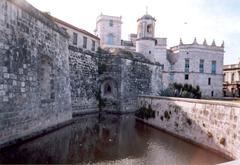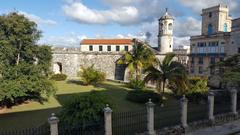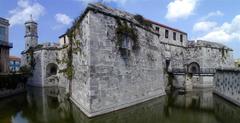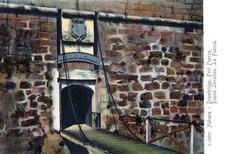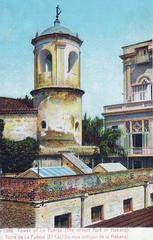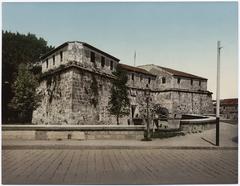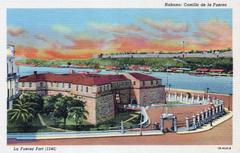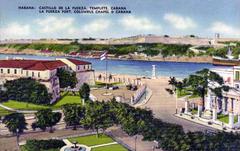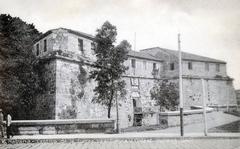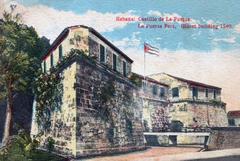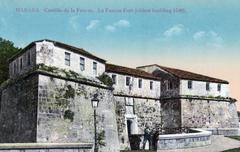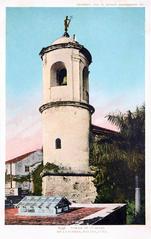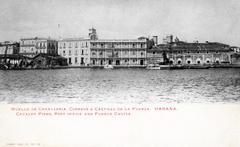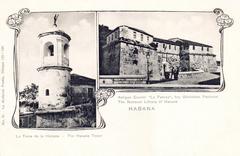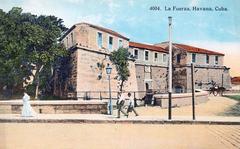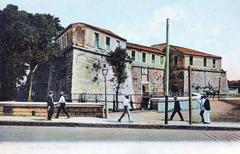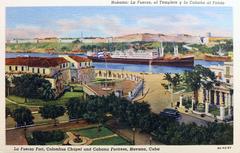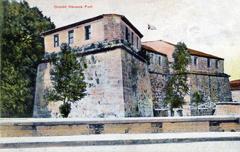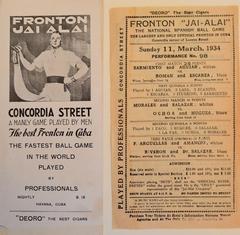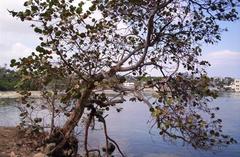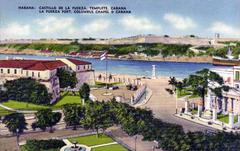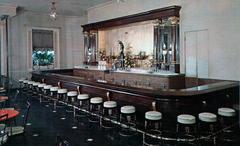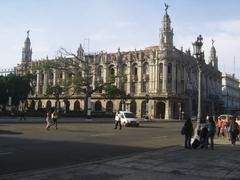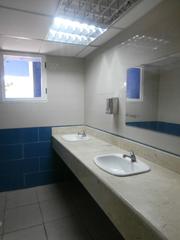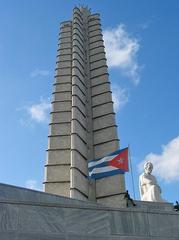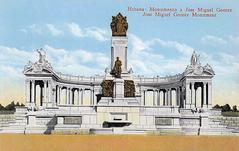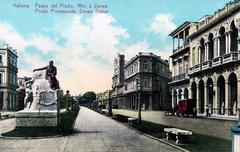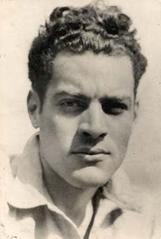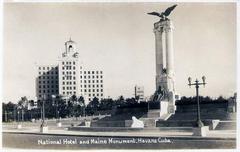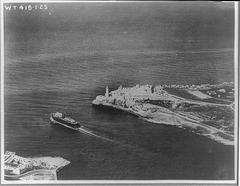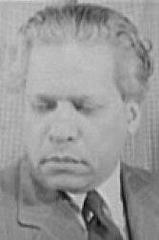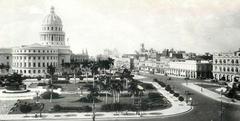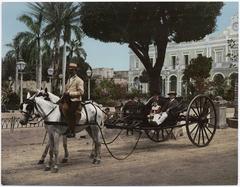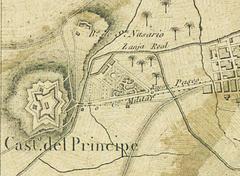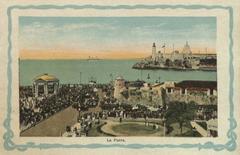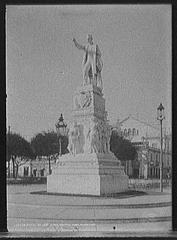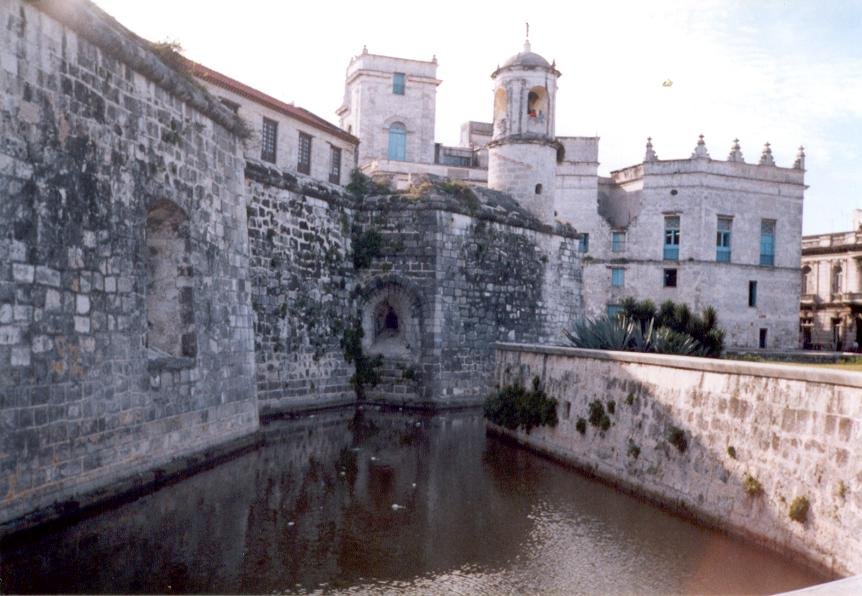
Castillo de la Real Fuerza: Visiting Hours, Tickets, and Historical Insights in Havana
Date: 14/06/2025
Introduction: The Significance of Castillo de la Real Fuerza in Havana
The Castillo de la Real Fuerza stands as a remarkable testament to Havana’s colonial legacy and military innovation. As the oldest stone fortress in the Americas, its construction between 1558 and 1577 marked a turning point in the defense of Spanish colonial outposts against persistent threats from pirates and rival powers. Designed by Bartolomé Sánchez and later completed by Francisco de Calona, this Renaissance-style bastion is both a symbol of resilience and a centerpiece of Havana’s UNESCO World Heritage-listed Old Town (UNESCO; La Habana Guide; Wikipedia).
The fortress’s thick limestone walls, iconic watchtower crowned by the famed bronze weather vane “La Giraldilla,” and strategic—if imperfect—placement within Havana Bay, reflect the city’s maritime history and the evolution of colonial defenses. Today, Castillo de la Real Fuerza serves as a vibrant museum, inviting travelers to immerse themselves in the stories, architecture, and panoramic vistas that shaped Havana’s destiny (Lonely Planet; Kiddle).
This comprehensive guide details the fortress’s historical background, unique architectural features, visiting hours, ticketing, accessibility, guided tours, and nearby attractions, ensuring an enriching and memorable visit (Cuban Travel Agency; minube.net).
Historical Overview
Origins and Construction
Following the devastating 1555 attack by French privateer Jacques de Sores, the need for robust defenses led to the commissioning of the Castillo de la Real Fuerza in 1558 (Kiddle; Havana Times). Construction was fraught with delays and relied on forced labor, including enslaved people and French prisoners. The fortress was finally completed in 1577 and became a pioneering example of Renaissance military architecture in the New World (Wikipedia).
Architectural Features and Innovations
- Bastioned Layout: The square plan with four bastions at each corner was designed to maximize defensive firepower and withstand cannon fire (Trip Cuba; Kiddle).
- Moat and Drawbridge: Surrounded by a seawater moat, the fortress was accessible only by a drawbridge.
- Central Courtyard: Provided light, ventilation, and a mustering ground for troops.
- La Giraldilla: The bronze weather vane sculpted in the 1630s atop the watchtower is now a symbol of Havana, believed to represent Isabel de Bobadilla (Lonely Planet; Kiddle).
- Stone Masonry: Constructed from finely cut local limestone, with walls over 3 meters thick in places.
Despite its innovations, the fortress’s position set back from the bay’s mouth limited its effectiveness against naval attacks, prompting the later construction of Morro Castle and La Cabaña (Wikipedia).
Evolution of Use
- Governor’s Residence: After its defensive shortcomings became evident, the fortress became the home and administrative center for Havana’s governors.
- Administrative and Civil Uses: Used for storage, customs, and as the headquarters for the Spanish colonial navy through the 18th and 19th centuries.
- Cultural Rebirth: Post-1959, it became the seat of Cuba’s National Monuments Commission and later the National Center for Conservation, Restoration, and Museology (minube.net).
- Modern Museum: Today, it hosts exhibitions on Cuba’s maritime history and is a key component of Havana’s UNESCO World Heritage Site (GPSmyCity).
Castillo de la Real Fuerza Visitor Information
Location and Accessibility
Situated at Calle O’Reilly No. 2, near the Plaza de Armas in Old Havana, the fortress is easily accessible on foot and included in many guided tours (Cuban Travel Agency). Public transportation and taxis frequently stop nearby.
Visiting Hours
- General Opening: Tuesday to Sunday, 9:00 AM – 5:00 PM. Closed Mondays and on major public holidays (minube.net).
- Best Times: Early mornings and late afternoons offer fewer crowds and optimal lighting for photography.
Tickets and Admission
- Price: Admission ranges from 3 to 10 Cuban pesos (or CUC), with discounts for students, seniors, and Cuban residents (Cuban Travel Agency).
- Purchase: Tickets are sold on-site. Cash is recommended due to inconsistent card acceptance.
- Includes: Access to the Museo de Navegación (Navigation Museum) inside the fortress.
Accessibility
- Ground Floor: Generally accessible.
- Upper Levels and Tower: Require stairs and may be difficult for those with mobility challenges.
- Assistance: Contact the site in advance for specific needs.
Guided Tours and Exhibits
- Guided Tours: Available in Spanish and English, providing historical and architectural insights. Advance booking is recommended for English tours (Cuban Travel Agency).
- Exhibitions: The Museo de Navegación features scale models of historic ships (like the Santísima Trinidad), navigational instruments, and colonial artifacts (TravelDIR).
- Photography: Photography is encouraged outdoors; interior photography may be restricted to protect exhibits.
Visitor Amenities
- Restrooms: Available on-site.
- Gift Shop: Sells books, postcards, and maritime souvenirs including La Giraldilla replicas.
- Language: Most signage is in Spanish with some English translation; translation apps are helpful.
Cultural and Historical Highlights
La Giraldilla: Emblem of Havana
The bronze La Giraldilla weather vane atop the watchtower is more than a decorative feature—it is an enduring symbol of Havana. Said to represent Isabel de Bobadilla, the city’s only female governor, the figure has inspired legends and is featured on the logo of Havana Club rum (Cuban Travel Agency).
Influence on Havana’s Urban Development
The fortress’s construction shaped the urban grid of Old Havana and anchored the surrounding Plaza de Armas—the city’s historical administrative center (UNESCO). Its presence prompted the development of a broader fortification network that includes Morro Castle, La Punta, and La Cabaña.
UNESCO World Heritage Status and Preservation
The site, along with Old Havana’s fortification system, was inscribed as a UNESCO World Heritage Site in 1982 for its universal value and historical integrity (UNESCO). Ongoing restoration is managed by the Office of the Historian of Havana, supported by national heritage laws.
Exploring the Fortress: What to See
- Central Courtyard: A tranquil space often used for temporary exhibitions.
- Ramparts and Towers: Offer sweeping views of Havana Bay and the city’s skyline (TravelDIR).
- Museo de Navegación: Maritime artifacts, ship models, and interactive displays about Spanish colonial defense.
- Stone Masonry and Bastions: Learn about Renaissance military engineering and construction techniques.
Tips for Visiting Castillo de la Real Fuerza
- Wear comfortable shoes; stone surfaces can be slippery.
- Bring water and sun protection, especially during peak hours.
- Arrive early or late to avoid crowds and enjoy the best lighting for photos.
- Respect photography restrictions inside museum galleries.
- Download maps or fortress information in advance due to limited Wi-Fi.
Nearby Havana Historical Sites
- Plaza de Armas: Historic square with colonial architecture and book markets.
- Palacio de los Capitanes Generales: Now the City Museum.
- Castillo de los Tres Reyes del Morro and La Cabaña: Iconic fortresses offering panoramic views across the harbor.
- Cathedral of Havana: A short stroll from the fortress.
Frequently Asked Questions (FAQ)
What are Castillo de la Real Fuerza opening hours?
Open Tuesday to Sunday, 9:00 AM to 5:00 PM. Closed Mondays.
How much are tickets?
Admission is typically 3–10 Cuban pesos, with discounts for students and seniors.
Is the fortress accessible for visitors with disabilities?
The ground floor is accessible; upper levels may be challenging due to stairs.
Are guided tours available?
Yes, guided tours in Spanish and English are available; book in advance for English.
Can I take photographs inside?
Photography is allowed outdoors; interior photography may be restricted in museum galleries.
Are there special events at the fortress?
Yes, cultural events, workshops, and lectures are hosted periodically.
Visual Gallery



Alt text includes keywords such as ‘Castillo de la Real Fuerza visiting hours’ and ‘Havana historical sites’ for SEO.
Summary and Visitor Tips
Castillo de la Real Fuerza is a must-visit for anyone exploring Havana’s historical sites. With its rich colonial history, well-preserved Renaissance architecture, and engaging museum exhibits, the fortress offers a unique blend of heritage and culture. Plan your visit during off-peak hours, book guided tours for deeper insight, and explore the neighboring attractions for a comprehensive experience of Old Havana.
Sources and Official Links
- La Habana Guide
- minube.net
- Fotos de la Habana
- Cuban Travel Agency
- UNESCO World Heritage Listing for Old Havana
- Havana Times
- Wikipedia
- Lonely Planet
- Kiddle
- GPSmyCity
- TravelDIR
For updates, special event listings, and guided audio tours, download the Audiala app. Follow us on social media for the latest news and travel inspiration featuring Havana’s most iconic landmarks.
